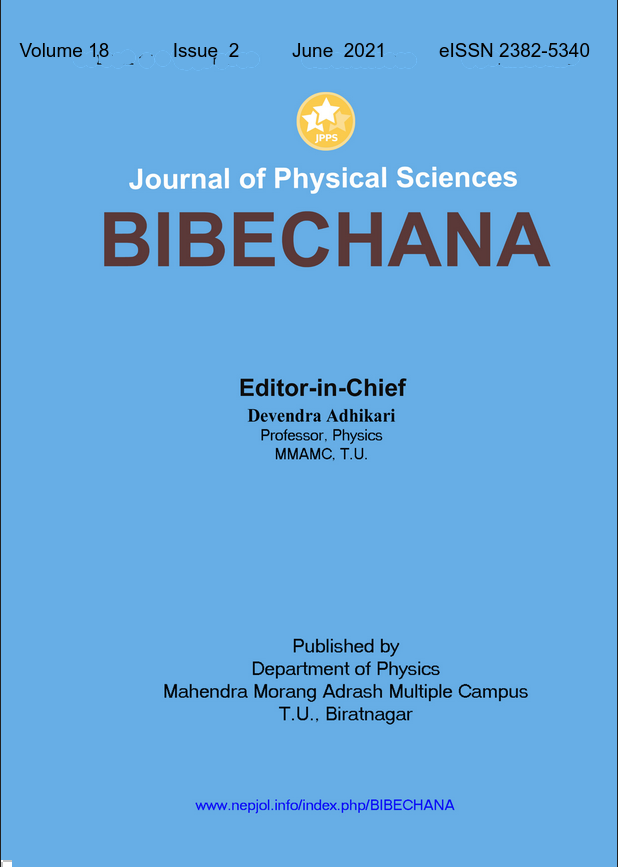Study of star formation rate and metallicity of the low redshift (z < 0.02) dwarf galaxies
DOI:
https://doi.org/10.3126/bibechana.v18i2.34067Keywords:
Dwarf Galaxies, Star formation rate, Spectra, Hα Measurement, SDSSAbstract
In this paper, we have presented an analysis of emission lines from two dwarf galaxies. We analyzed the strongest emission lines of wavelength ranging from 4100 Å to 6700 Å. Among these emission lines, Hα and OIII have the highest intensities with 113.09×10-17 erg/s/cm2/Å and 142.12×10-17 erg/s/cm2/Å in the galaxies SDSSJ222726.64+120539.8 and SDSSJ162753.47+482529.3, respectively. The Gaussian fit carried out in these emission lines showed the perfect fits with regression coefficient greater than 98 %, and full width half maximum (FWHM) of less than 4 Å. The line ratios calculated between Hα and Hβ for SDSSJ222726.64+120539.8 and SDSSJ162753.47+482529.3 were 2.78 and 2.85, respectively, suggesting that the galaxies are starburst galaxies. The measurement of the Hα line from both galaxies was then used to assess the rate of star formation. The star formation rate of the galaxies SDSSJ222726.64+120539.8 and SDSSJ162753.47+482529.3 was found to be 0.010 M☉year-1 and 0.016 M☉year-1, respectively, indicating a low rate of star formation, and the emission line metallicity was derived using the Hα and NII line, which were measured to be 8.23 dex and 8.70 dex, respectively.
BIBECHANA 18 (2) (2021) 43-49
Downloads
Downloads
Published
How to Cite
Issue
Section
License
This license enables reusers to distribute, remix, adapt, and build upon the material in any medium or format for noncommercial purposes only, and only so long as attribution is given to the creator.




